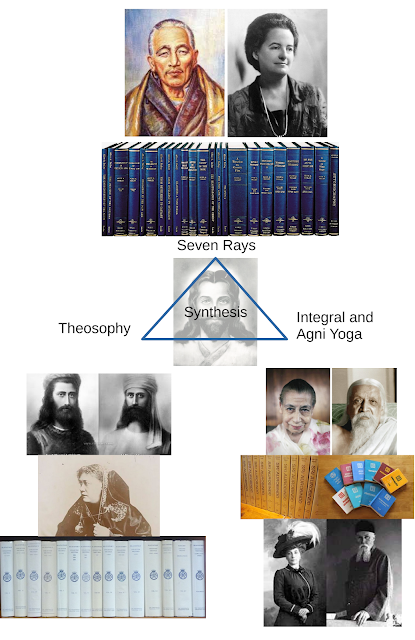Vindication of Helena P. Blavatsky - Truth (of Oneness) is the highest religion !
Take an exciting first look at the attached visual pictures of what Helena Blavatasky proclaimed - "There is no religion higher than truth (of Oneness)".
For the impatient truth hungry souls, an intuitive visual look is worth a thousand words of intellect. The ongoing synthesis project should be useful to those souls having Ray 2A, Ray 4, or Ray 6 before it manifests fully on the physical plane.
The diagram related to Integral yoga of Sri Aurobindo and teachings of ancient Indian vedas is from https://www.ipi.org.in/ and books by A. S. Dalal - A Higher Psychology
The diagram related to Theosophy is from Inner Group Teachings of Blavatsky.
The diagram related to Seven Ray treatise of Djwal Khul is from Initiations Human and Solar.
In HPBs words
“The Path is one for all, the means to reach the goal must vary with the Pilgrims.”—Voice of the Silence
Note for souls having Ray 3, or Ray 5 an equivalent picture and direction is being worked out so far at this time.








Comments
Post a Comment